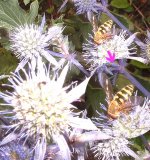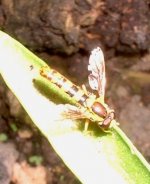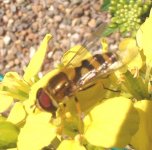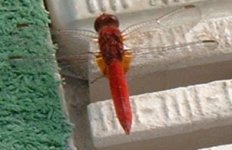Surreybirder
Ken Noble
I only just noticed that you are a (comparative) newcomer, Ian, so welcome to Birdforum. It's certainly providing me with a lot of interest! (Unfortunately the home I'm moving to in a few weeks' time doesn't have cable so I'll miss the Broad-band connection!)
I've got the first edition of Stubbs and Falk with an update. I don't think I'll be investing in the second edition as hoverflies is not my main interest--I prefer birds, lepidoptera and odonata. However, I do find it interesting to see that my garden has quite a few different hoverflies. There's lots of little black ones that I haven't even tried to ID. For some reason many of them seem to like the sea holly. When it was overcast this morning the majority of the hoverflies (and many other insects) seemed to concentrate on one particular plant--although the buddliea and the marigolds have their fans, too. The butterflies seem to prefer the buddliea and some scabius I grew from seed--although they also like sunbathing on the railway sleepers around our veggie plot.
I've got the first edition of Stubbs and Falk with an update. I don't think I'll be investing in the second edition as hoverflies is not my main interest--I prefer birds, lepidoptera and odonata. However, I do find it interesting to see that my garden has quite a few different hoverflies. There's lots of little black ones that I haven't even tried to ID. For some reason many of them seem to like the sea holly. When it was overcast this morning the majority of the hoverflies (and many other insects) seemed to concentrate on one particular plant--although the buddliea and the marigolds have their fans, too. The butterflies seem to prefer the buddliea and some scabius I grew from seed--although they also like sunbathing on the railway sleepers around our veggie plot.
Last edited:








